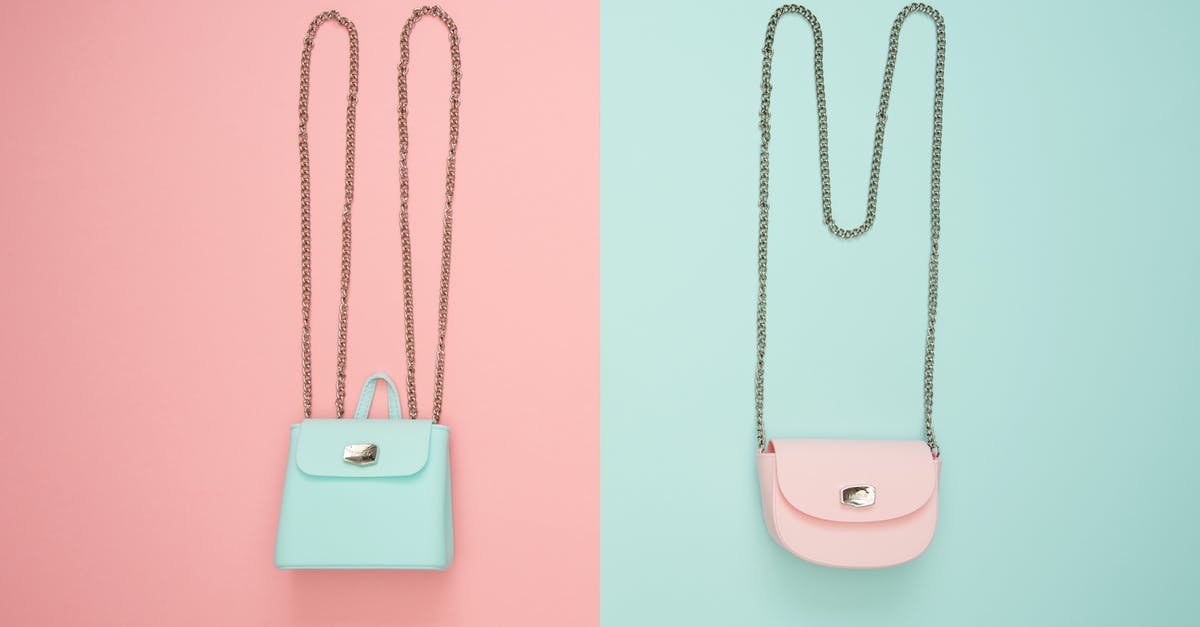Sous vide without plastic bags?

I really like the idea of cooking steak using sous vide. However, I am very wary of heating food up together with plastic, and then eating the food, as I believe that at high temperatures, chemicals from the plastic will leech into the food. *
Is there an alternative to plastic bags for sous vide?
The requirements for the new type of container must be that it is airtight, waterproof, and of course able to withstand heat.
- Call me paranoid, but I do believe this to be the case - and I do not want to ingest these chemicals
Best Answer
First of all, I agree with the others that there is no harm done by plastic bags for sous vide. I have read a statement by the manufacturer that brand-name Ziploc bags don't release anything below 76°C. If you think how much a lawsuit could cost them if the information turned out to be wrong, I trust that they are telling the truth. For other brands, you may have to do some research about safe temperatures.
If you are still unconvinced, your choice of material is very limited. You say it must be airtight and waterproof; I'll add that it must be pliable, so it can cover an irregular steak shape perfectly, without leaving air pockets, and it must somehow be able to create a seal. Also, it must not release any harmful chemicals by itself.
About the only thing that fulfills all criteria would be a wax with a high melting point, like carnauba wax. You could paint the steak with the melted wax, or, probably better, you could soak a piece of gauze in the melted wax and wrap the steak in it, pressing out any air bubbles. Then let it cool and set before cooking. The downside: not only is the food grade wax difficult to source for private people, it also can end up costing quite a bit.
Another option would be silicone, like the one used for baking pans. Unlike plastic, food grade silicone does not contain any chemicals which could leak - the medical sector uses the same stuff for prostethics and implants; it is safe to have it inside your body, so it is definitely safe to cook your food in it. The problem is that you'll need a sealable bag made of silicone, and I don't know if anybody manufactures such bags.
You might consider very tightly wrapping the meat in a caul (not necessarily an amniotic caul, a peritoneum should do nicely) and binding it, but I don't know where you can get cauls. Maybe you can ask a butcher. Also, it probably won't be 100% watertight (but still enough to keep the tasty juices in the steak where they belong, instead of having them flow out into the water).
If you are willing to relax your rules a bit, you can solve the problem much easier. I think you will agree that whatever hypothetical substance might leak from a plastic bag, it cannot travel far through a solid medium. So a steak wrapped in something protective and then sealed in a plastic bag should be safe - you just discard both the plastic bag and the presumably contaminated protective substance. Yes, it is possible that meat juices that have come in contact with the plastic bag end up on the steak, but the possible contamination should be hundreds of times less than if direct contact is allowed between the plastic and the meat.
If you can live with this option, the usual insulators used in the kitchen should do. They are plant leaves - I'd use grape leaves, but you can use practically anything that is big enough - and batters, like tempura batter (breading leaves an irregularly shaped surface, so I won't consider it here, you'll end up with lots of miniature air pockets). If using a batter, you will want to first set it in a pan with very hot oil, just hold it there long enough to set the batter, but not enough to warm the meat on the inside above the sous vide temperature. Both of these options wont't function on their own, as they won't create a sealed waterproof barrier. But combined with a plastic bag and later discarded, they should be a good solution. The leaves will also add a nice taste of their own.
Pictures about "Sous vide without plastic bags?"



Quick Answer about "Sous vide without plastic bags?"
Many sous vide recipes concentrate on marinades and sauces because they work well in bags, but some food like baked potatoes or simple roasted meats may be better dry. Unlike sealed bags, unsealed glass allows some of the liquid to evaporate, an effect you might want.What can I use instead of sous vide bags?
Food-safe zipper bags work great for sous vide. I'm known to go the cheap route whenever possible, so while learning to cook sous vide I used Ziploc bags instead of vacuum sealed bags. I have never had a problem with them.Can Ziploc bags be used for sous vide?
You can sous vide many things with plastic freezer bags, but you can't sous vide everything with ziplock bags.Is it safe to sous vide in plastic?
Many name-brand plastic bags are made with polyethylene and polypropylene. These types of plastic are resistant to the sub-boiling temperatures involved in sous vide cooking, and they are also considered safe in and of themselves: Even if you cut up and ate a polyethylene bag, there's no toxicity risk.Sous Vide Experiment: Do You Really Need a Bag to Sous Vide? (Giveaway Winner)| Salty Tales
More answers regarding sous vide without plastic bags?
Answer 2
The problem is that air must be removed so that the food is not insulated from the water.
Mason jars work fine but you have to fill liquid around your food. Marinades, broth, etc can be used. Some recipes will have to be modified. Some probably just won't work with the extra liquid or the target food won't fit in a jar.
And then there's the issue of undetectable chemicals leaching out of the glass. Sure we've never discovered any but that's hardly conclusive. :)
Answer 3
A company called Lekue makes 1 liter resealable bags out of silicon. You can find them on Amazon for $20 at the moment.
I have not used them myself. I've heard some complaints of leaking, which would obviously be a showstopper. But if you get one that does not leak, and think that the silicon manufacturing process leaves no unsafe chemicals, then they could be your best option.
The side benefit is they are reusable instead of piling more waste in the landfill.
Answer 4
If found a three-pack of those silicone dough-kneading bags on Amazon that are rated from -40°F to 450°F. The bags can go in the fridge or freezer for marinating or food storage. They came today, and they are plenty large for doing large batches of dried beans (195°F) and rice (200°F) sous vide. (I was using gallon-sized ziplock bags until I read that the seams break down above (I think it was) about 158°F.)
These dough bags look large enough to each hold one of those pork sirloin tip roasts from Costco, which around here come in three-packs. How convenient.... I'd use the water displacement method, not vac-sealing, so for anything that doesn't have a lot of liquid, I'd try to find some kind of bag clip capable of working with them. But most of what I cook sous vide is done in a liquid and usually for not more than 12 hours, so I just displace the water and clip the bag over the side of my square container.
Answer 5
Food grade disposable gloves work fine (latex or others). Wash them first as many have starch based release agent in them which may effect food presentation
You can either use a vacuum pump, or just immerse filled glove in water just below the opening so as to push out the air. Then tie off with kitchen string. Sort of the reverse of a party balloon
Answer 6
You could also consider a combi-oven or water vapor oven. They're sometimes called "sous vide without bags". The very moist air is a great heat conductor and foods come out just beautifully. But the ovens are not cheap.
Keep in mind that not all plastic is created equal, and while not all of it is heat-stable at the temperatures we're discussing some of it is very, very stable.
Polyethylene (NOT polypropylene!) is a great sous vide and freezer-storage plastic. It's also used in cryovac, which means that your meat was likely stored and wet-aged in it prior to final butchering at point of sale. It's the plastic found in Rival Seal-a-Meal, FoodSaver and Ziploc. Also no PVC or phthalates. I've been told some off-brands use different plastics (NOT verified!), and that's one reason why I don't use other brands.
Answer 7
Sheep stomach would likely work, as for Haggis as might intestine from a large enough animal. Barring anything quite that 'organic', Cellulose or Collagen based sausage casings should work. You can buy them in a variety of sizes; 3.675" (93 mm) is easy to find.
Answer 8
A thin walled pyrex bowl worked somewhat for me: http://www.cookskit.co.uk/shop/vclose1.asp?prd=1841&cat=371000327
Throw the goods into the bowl and apply the bowl's cover. Let it float on top of the bath.
It will only work if your sous vide cooker has a lid. If you don't have a lid over the bath, the bowl will not heat through. I tried without cooker lid and failed.
It also takes way more room in the cooker than bags do. Only useful if you heat just one portion.
For vegetables at 90°C it worked perfectly.
For meat at 54°C it worked very much slower than a bag. Still, if you can leave it in long enough, it will work.
I found it unsuitable for steak and fish, because of the increased cooking time and uneven heating, even with turning the goods. But I will always use it for hot stuff like veggies.
Answer 9
As the public has been increasingly conscious of BPA and its alleged effects, I've seen more and more BPA-free plastic products hit the market. FoodSaver now produces BPA-free bags, presumably to address your exact concern.
Answer 10
There are zip-loc bags with aluminum foil insides. This might be the most practical option. we try to avoid aluminum usually, but perhaps is more preferred over plastic. Thanks
Answer 11
Just saw these reusable silibagz on indiegogo, they claim to seal airtight and the cylindrical design makes it easy to stand on its own for mixing ingredients. But they're $30 plus $7 shipping to the U.S. https://www.indiegogo.com/projects/sawatdee-silibagz
Answer 12
I've been thinking of cooking fish and beef fillets using Pyrex dishes filled with vegetable oil as a good conductor of heat around the food. Chefs have been oil poaching fish for ages. Air is not such a good heat conductor, thus air is removed out of the foodsaver bags. Sure, some of the juices of the fish or beef will end up in the oil bath, but I'm willing to sacrifice a little of that for my health. Plastics leach many chemicals with and without heat (we never heat IV bags and tubes, yet it's proven they leach harmful chemicals) so just knowing BPA is taken out (only after the consumer outrage) doesn't make me feel any better.
Sources: Stack Exchange - This article follows the attribution requirements of Stack Exchange and is licensed under CC BY-SA 3.0.
Images: Moose Photos, cottonbro, Karolina Grabowska, cottonbro
